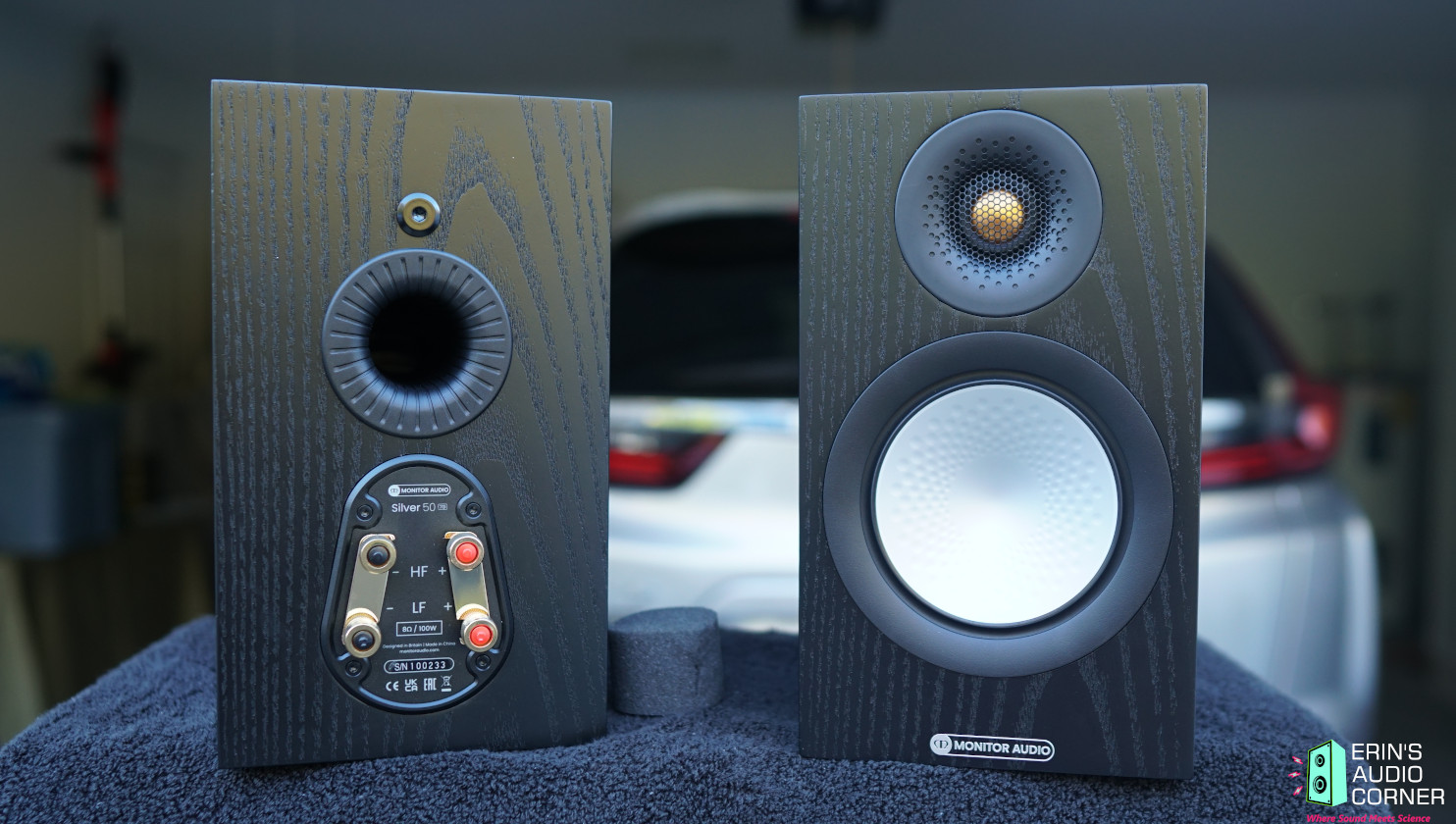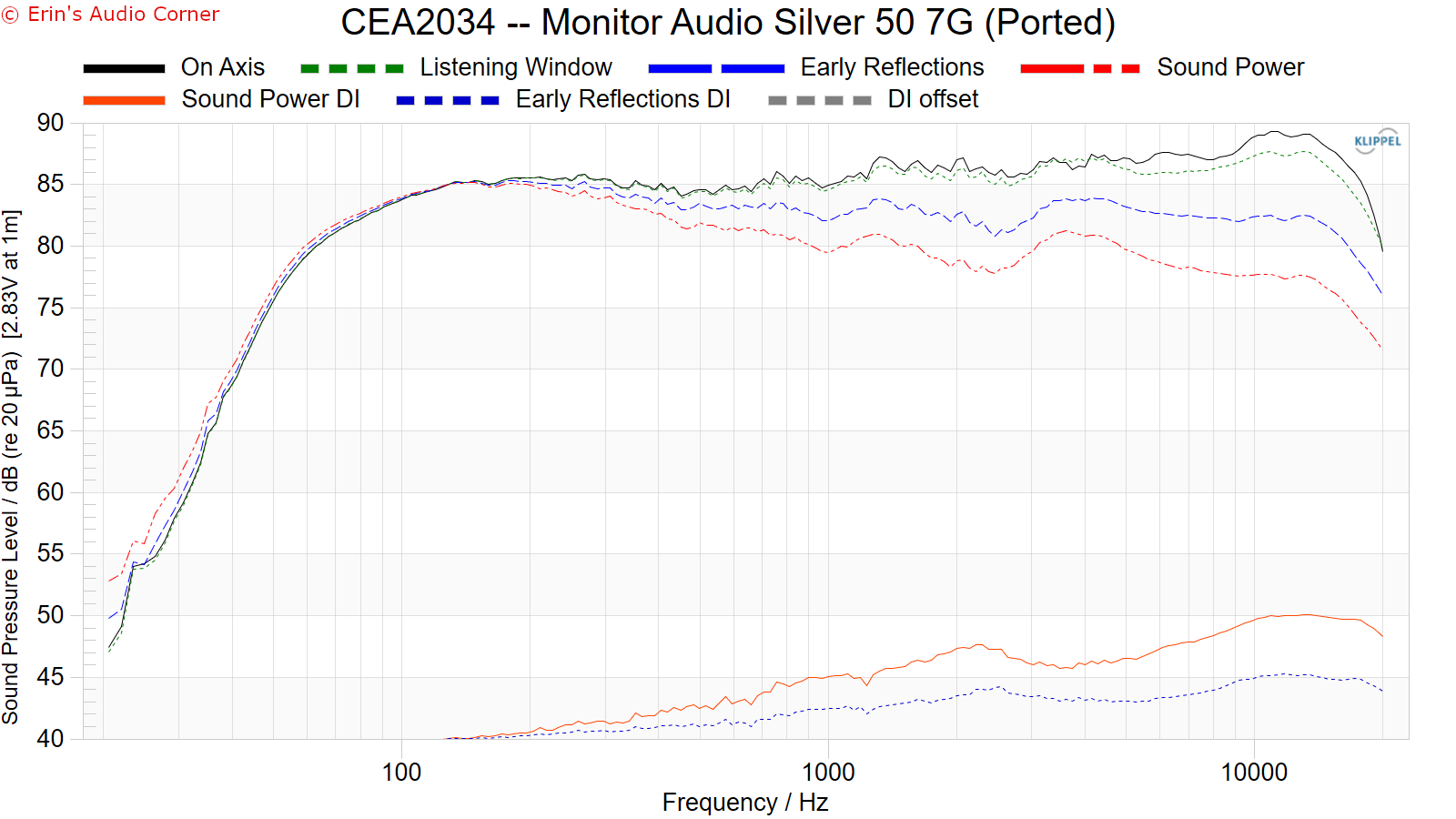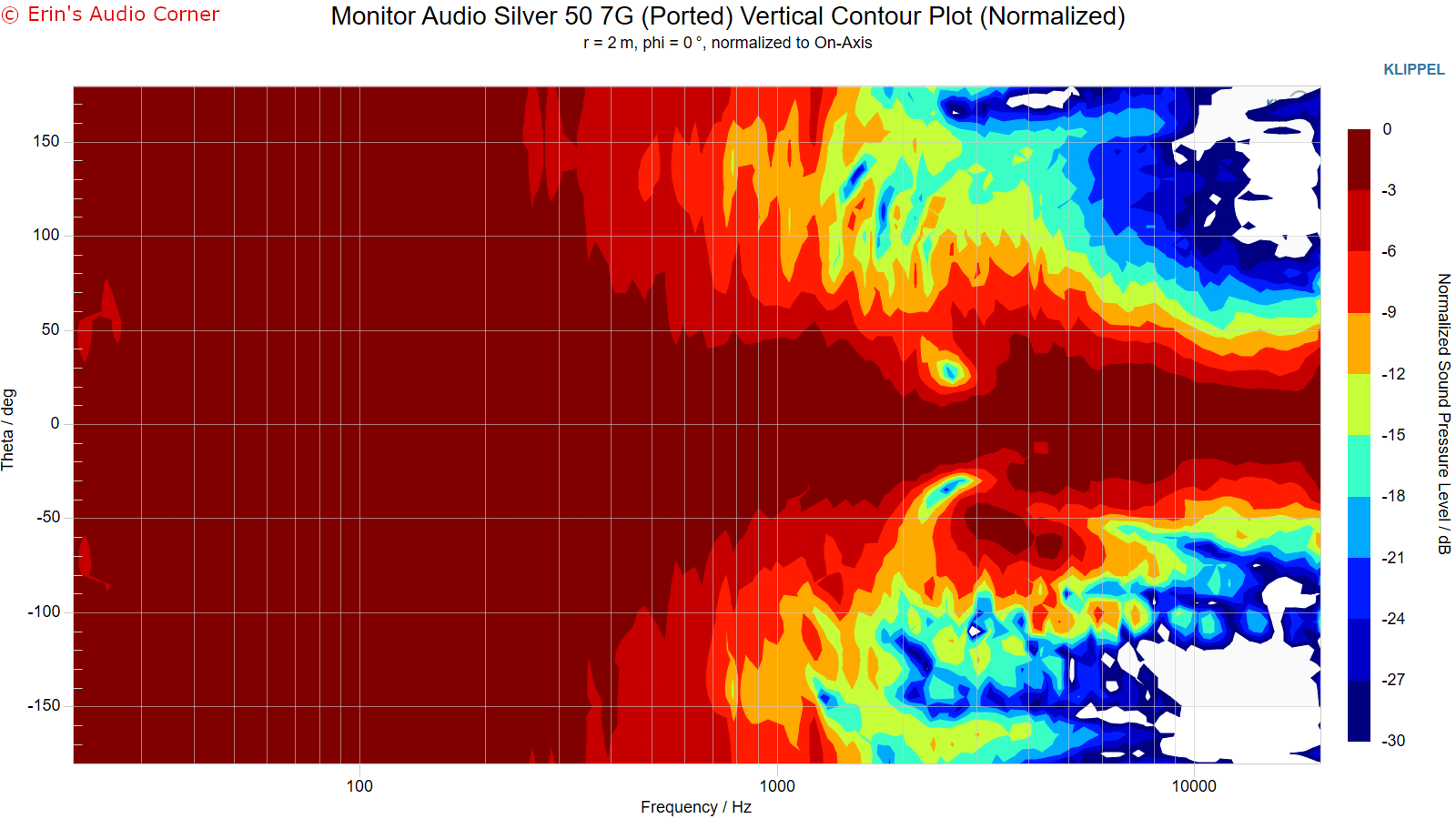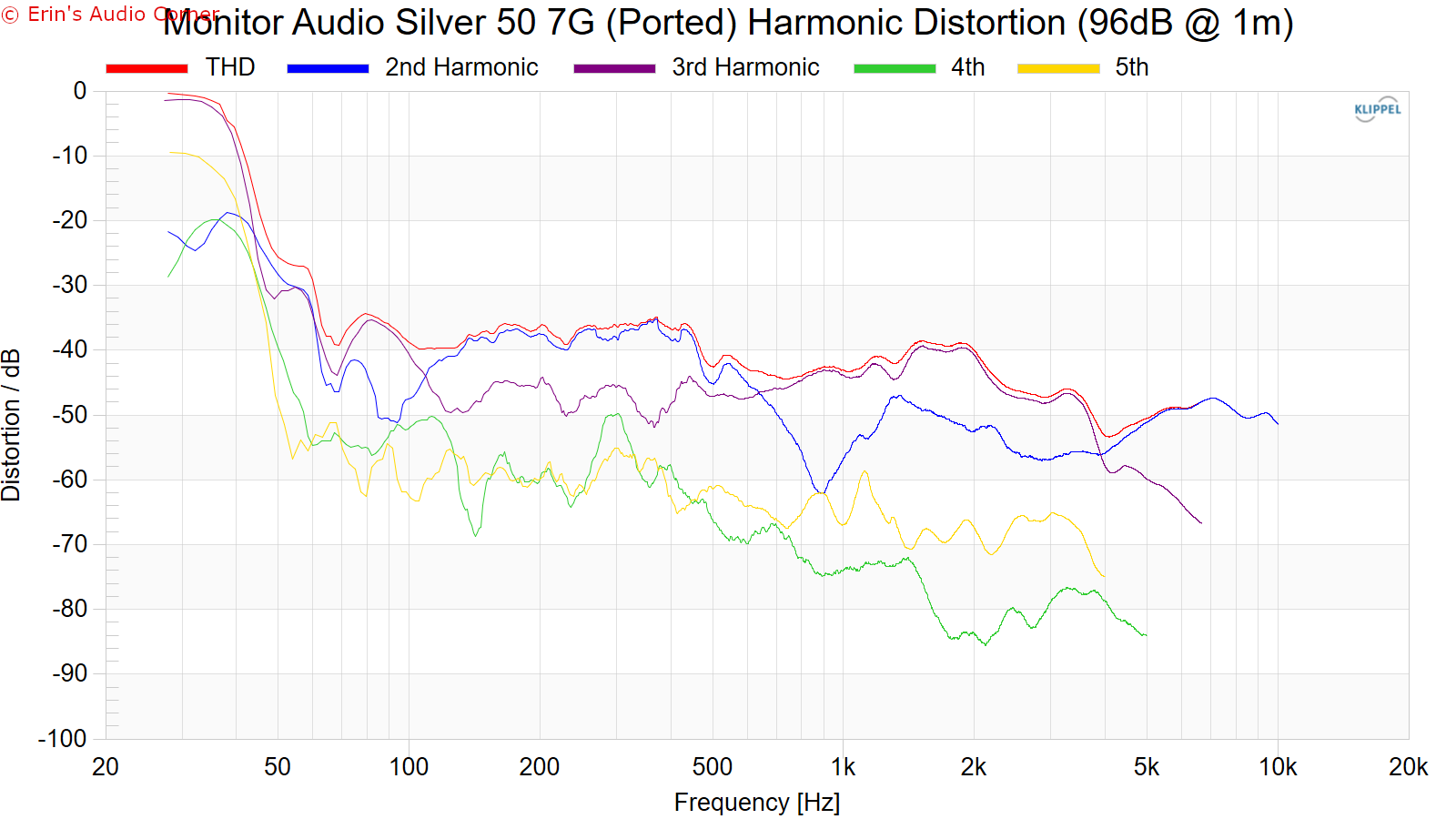Erin @hardisj is back with another fantastic review! 

These retail for approximately $979/pair USD.







Plus the full suite of measurements at:
His conclusion:
Discuss!
These retail for approximately $979/pair USD.






Plus the full suite of measurements at:
Monitor Audio Silver 50 7g Bookshelf Speaker Review
Monitor Audio Silver 50 7g Bookshelf Review
www.erinsaudiocorner.com
His conclusion:
As stated in the Foreword, this written review is purposely a cliff’s notes version. For details about the performance (objectively and subjectively) please watch the YouTube video. But a couple quick notes based on my listening and what I see in the data:
In my listening tests I noted that the treble was lifted too much for my liking when the speaker is aimed directly at the listener. The speaker’s sensitivity is about 85.5dB @ 2.83v/1m but at 10kHz the response is about +3dB in level. Horizontal directivity takes a minor hit around the 4kHz region due to diffraction. Normally diffraction at this frequency would be worse thanks to the flat baffle but the slightly inset tweeter in its modest waveguide helps to alleviate that to a degree. The on-axis HF rise and this diffraction, combined with the crossover not being optimized for proper matching of the radiation pattern of the woofer and tweeter, yields a stronger off-axis reflection relative to the on-axis sound. This is what ultimately results in the sound at the listening position in my room to be rather treble heavy. Turning the speaker off-axis, pointed more straight into the room, by about 15° tames the HF rise enough to not be bothersome. Beyond about 20° resulted in the HF being too tame and the speaker was more “warm”; not something I’d necessarily recommend for accuracy. Based on my lisening tests and what the data shows I’d recommend turning these speakers off axis by about 10°-15°.
Vertical directivity suffers some as well and this speaker needs to be listened within a ±10° window at most but ideally your ears will be level with the tweeter.
Soundstage width - due to horizontal radiation width - is about what I would prefer at around 60° on average.
Distortion and compression data are good for a speaker this size (using a 5.25-inch midwoofer) with THD staying below 2% and compression within ±0.50dB down to about 70Hz even at 96dB/1m. While this speaker won’t play at deafening levels at large distances, it should be plenty adequate when used at reasonable volume levels and/or with a properly integrated subwoofer.
Build quality is nice and I have no complaints. It’s worth mentioning the unique midwoofer mounting method here which employs the use of a bolt which threads through the magnet portion of the drive unit to pull the speaker into the cabinet from the rear of the speaker. This, in theory at least, will reduce unwanted resonances otherwise imparted onto the cabinet when a drive unit is mounted via the basket (screws through the flange). I find this really neat and while it’s impossible for me to say it does work as marketed, I can say that the data shows no evidence of any cabinet resonance. You can find more information regarding this and the design of the midwoofer on their website here.
Overall, I think this is a good speaker when used slightly off-axis. Comparing this to other bookshelf speakers of its size (using a 5-inch midwoofer) this speaker seems to be toward the top of the crop in regards to distortion and compression. And the linearity (aside from the rise in treble) is smooth. Though, if the in-room HF rise - due to the HF tilt and poor pattern matching at the crossover - weren’t present I’d have liked this speaker much more.
Discuss!

